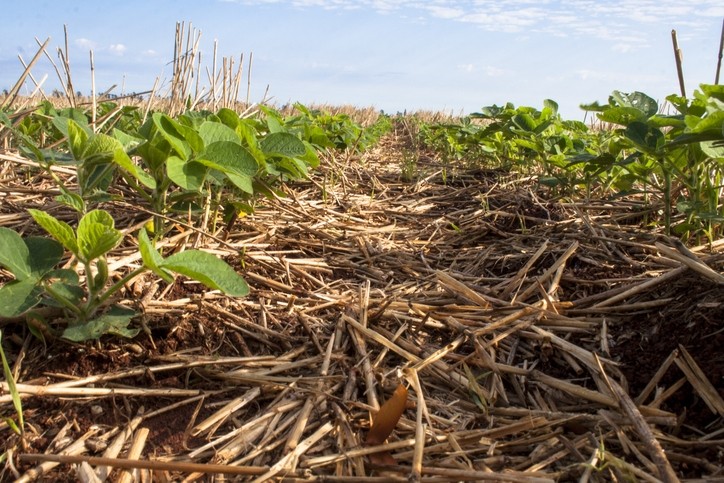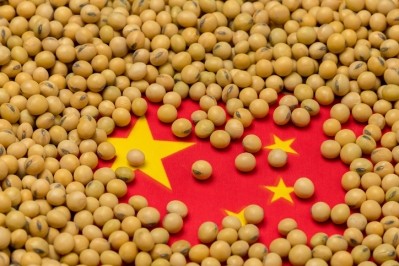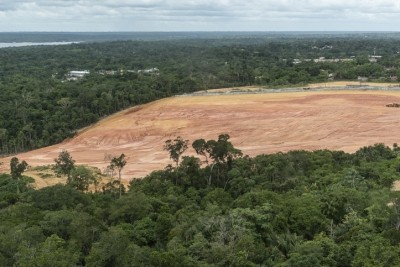‘Soy six’ trace 92 per cent of directly sourced soy to farm location

Individual company reports from ADM, Bunge, Cargill, COFCO International, Glencore Agriculture and Louis Dreyfus, collated in the SCF’s latest progress report, show that most of the soy volume sourced from the 25 priority municipalities is sourced direct from farmers, and that at least 92% of direct sourced soy in these areas is now traceable to the individual farm.
This excludes soy sourced by joint ventures, but the SCF said it is developing a methodology for including these volumes and this will be presented in the next report.
In practical terms, soy is defined as traceable when the location of the farm where it is produced is known, either through an Environmental Rural Register (CAR) number or geo-coordinates (GPS point or polygon).
Total traceability
“Reaching 100% traceability will mean all soy volume sourced directly from farmers has information on farm location,” Diane Holdorf, managing director food and nature at the WBCSD (World Business Council for Sustainable Development), which convenes the SCF, told FeedNavigator.
She said this knowledge was an essential foundation to achieving more transparent and sustainable supply chains.
“To understand risk and plan actions to implement responsible sourcing commitments, companies need to know where commodities are produced. Traceable supply chains can help companies identify issues and better engage with producers where the risks are highest,” she said.
However, she acknowledged that “achieving full traceability to farm will not alone solve the issue of deforestation and native vegetation conversion…it is a complex issue which requires a combination of approaches.”
Engaging producers on the ground
One such approach is collaboration with soy producers on the ground to develop action plans tailored to each municipality.
To this end, in June, the SCF announced partnerships with Solidaridad Brazil and the Produce, Conserve, Include (PCI) initiative to engage soy producers in Matopiba and Mato Grosso. It said the aim was to identify pragmatic solutions to the challenge of sustaining long-term soy production while protecting natural habitats.
“The partnerships we have recently announced will be critical to identify, with the support of producers, incentives for sustainable production, as well as to identify, encourage and scale existing best practices to maximize yields on the same amount of land, growing more from less,” explained Holdorf.
The initial phase of the project with Solidaridad Brazil will focus on interviewing farmers to assess current practices and understand key trends in land use dynamics in the regions.
Results will be used to co-develop action plans that support good agricultural practices and demonstrate the compatibility of profitable soy production with low-carbon and climate-smart practices, said the SCF.
Sustainable yield improvement strategies
“Soil management through minimum or no tillage, controlled traffic practices and cover crops, as well as livestock-crop integration are just some of the best practices that are being implemented by growers in the Cerrado to increase productivity and climate resilience,” said Holdorf.
The hope is that adopting such measures will go some way to sustainably meet growing global demand for soy.
Forecasts produced by the Brazilian Ministry of Agriculture indicate that Brazil will have to increase production by 32% over the next 10 years to keep pace with global demand.
The SCF says this growth will need to come partly from yield improvements, with an expected increase of 11.6% in productivity, and partly from sustainable crop area expansion.
“The Cerrado has between 18 and 48 million hectares of previously cleared land that is suitable for soy – more than enough land to satisfy the increased demand for soy. As SCF, our main goal is to work with producers at landscape level to encourage expansion into this available cleared area, and therefore protect remaining native vegetation,” said Holdorf.
In the next six months, SCF says it will continue working towards achieving full traceability to farm for direct sources in the 25 priority municipalities, as well as developing an action plan, including targets and KPIs, for its partnership projects. Progress will be reported in December 2020.









